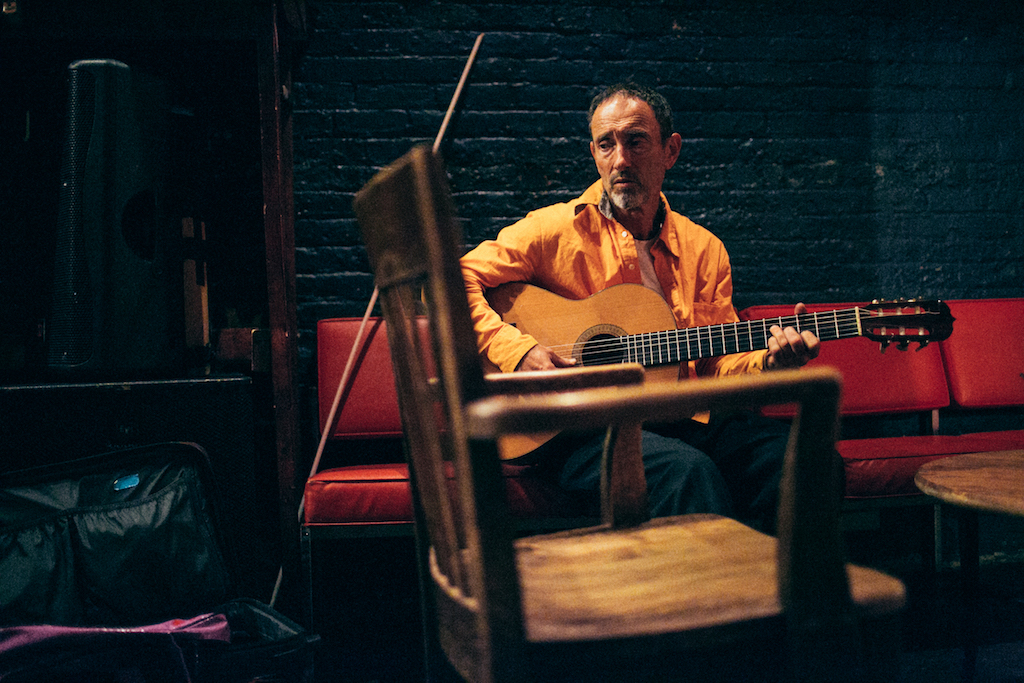[ad_1]
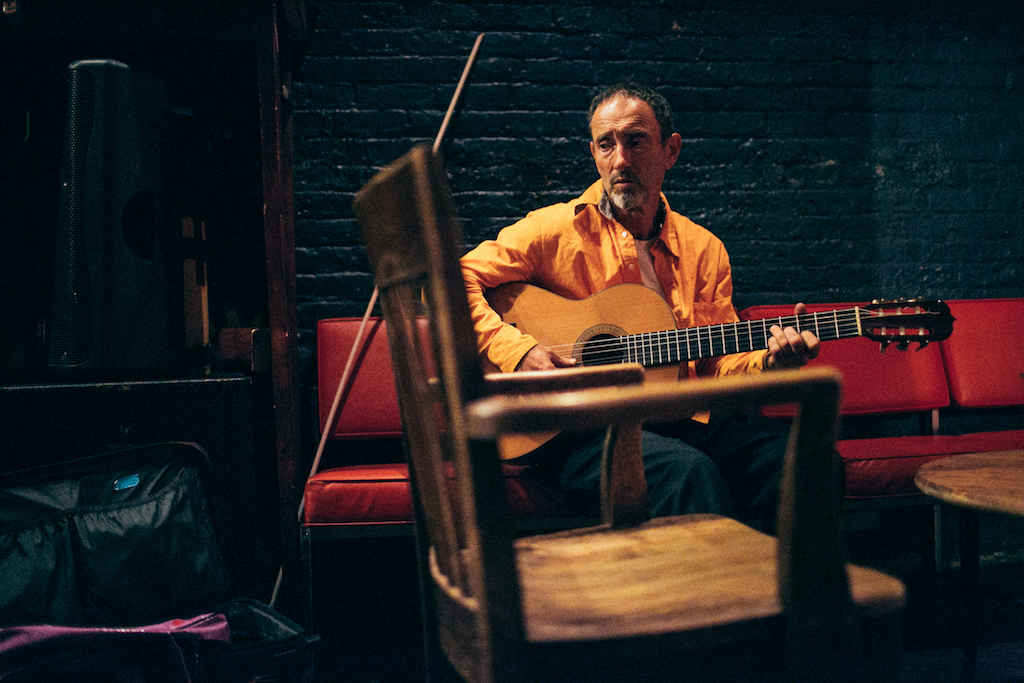
Jonathan Richman.
DRIELY S.
“Muses” is a column for which creators from different disciplines reveal sources of artistic inspiration and instigation.
Jonathan Richman came up as a songwriter in the 1970s and has been noted for his love of art. In both his solo work and with his band the Modern Lovers, he has cited artists he reveres—e.g., in the Modern Lovers’ “Girlfriend”: “If I were to walk to the Museum of Fine Arts in Boston / Well, first I’d go to the room where they keep the Cézanne.” Or in his solo song “No One Was Like Vermeer”: “Vermeer was eerie / Vermeer was strange / He had a more modern color range.” And then, most famously, in the Modern Lovers’ “Pablo Picasso”: “Pablo Picasso never got called an asshole.” Richman’s most recent album is 2016’s Ishkode! Ishkode!, and for “Muses,” he wrote about some artists who figure in his own work as a musician and a painter. —The Editors
Claude Monet
Before I was a musician I was a painter, going often to the Museum of Fine Arts in Boston and, while in high school, taking Saturday morning classes there. It was only after hearing certain “colors” in the music of a rock band that I took up guitar and shortly after, started to appear singing songs in public. As a teenager painting in oils, Monet changed me much. In my junior high and high school art classes, the Impressionists were emphasized, and Monet affected me at first sight. His particular feel for daylight, his autumn foliage, his afternoon poplar trees even changed how I heard the music I was listening to. Around this time, 1965 and 1966, the Left Banke sang “Walk Away Renee,” and the sad violins and sad voices in that song and Monet’s poplar trees had something in common for me.

Claude Monet, The Grand Canal, 1908, oil on canvas.
MUSEUM OF FINE ARTS, BOSTON
Salvador Dalí
With Dalí it was different. His paintings helped me find my way with their tone of foreboding and mockery but also a sense of wonder at the universe itself and what Aldous Huxley once wrote about something else: “the sinister otherness of familiar things.” Stark sunlight on the beaches, his feel for sky and sand, his imagination and his pure gall all helped me figure out a way to express myself in art. To you, the cerebral art critic who sees Dalí less as a great colorist and more as a self-promoting blowhard with gimmicks, I ask: 1. Was the man not a fine draftsman? (How about that line technique?) And 2. Could he paint or could he paint?! (How about that sense of perspective and his feel for sky and for sand?)
Edward Hopper
Edward Hopper, especially that painting of the gas station at night—Gas (1940)—was my inspiration for a lot of the songs I made up with my band The Modern Lovers when I was a kid. Especially “Roadrunner” owes to that gas station painting, but any songs I made up about lonely nights on lonely highways and the way lights were like friends in the dark. This is what “Roadrunner” was about. The Velvet Underground covered this kind of stark, lonely feeling of wonder and had a sound which, with its drowning darkness, felt right for my explorations into bleak, modern-world terror. That plus Hopper was a big part of my starting music.
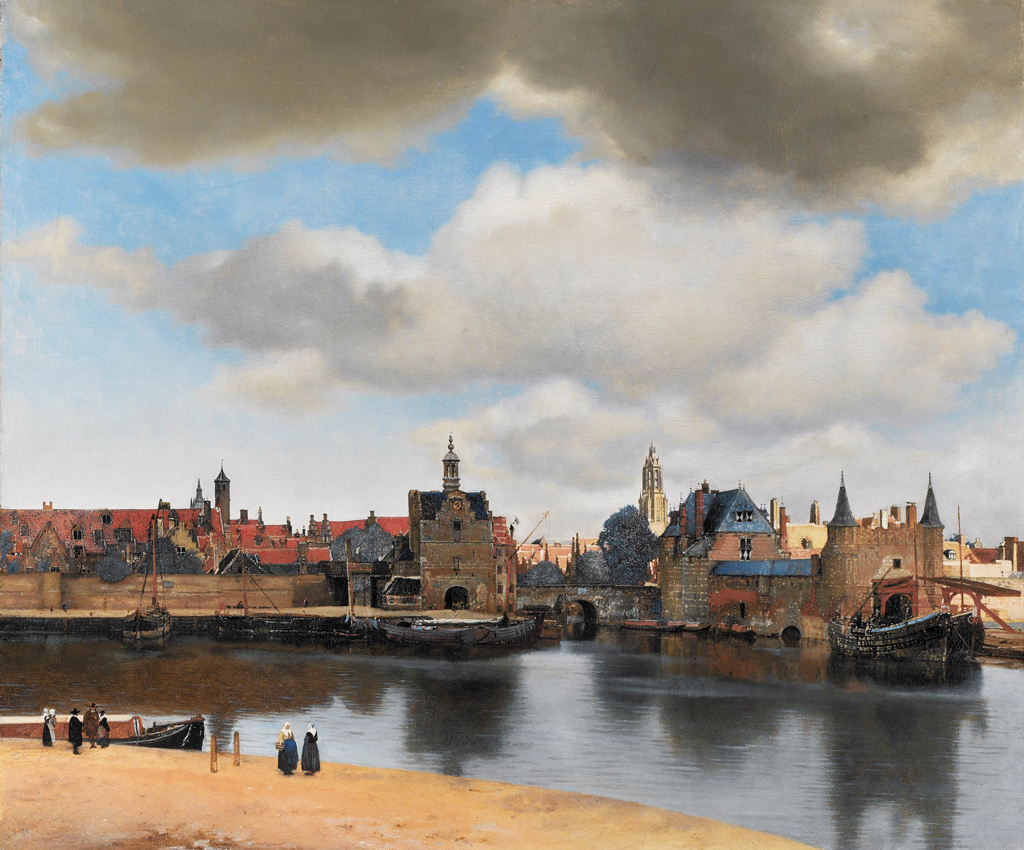
Johannes Vermeer, View on Delft, ca. 1660–61, oil on canvas.
MAURITSHUIS
Johannes Vermeer
Vermeer was a big part too, especially View of Delft (ca. 1660–61) and his black-and-white floors. His way of seeing the world was part of this thing I was trying to do with electric guitar and electric band. Nowadays, I play nylon string (a.k.a. “classical”) guitar and Matisse is much more an influence than the other paintings I’ve mentioned. But I’m still inspired by many, many painters. Corot, Berthe from the 1860s, and the dark brown and burnt umber of Rembrandt—all of them find their way into my music. As far as the colors of the Dutch masters are concerned, I search for that particular “roundness” of their browns and greens in the lower baritone parts of my sound. I don’t think about it much—I just work that way. For example, flamenco guitars are classical guitars, just more trebly and percussive. So if I’m wanting to express those low baritones, I’ll often prefer the standard classical guitar to the flamenco. But if I’m hearing in “yellows” and sandy white colors that day, I might crave the flamenco guitar.
Henri Matisse
Matisse didn’t pull the shenanigans that Dalí did: no pen and ink cartoons on top of his landscapes, no trompe l’oeil or nothin’—a whole other approach. The nonchalant subtlety of it was beyond my reach at age 20 but I go for it now. What emotional freedom! What depth of feeling for color! Wasn’t he one of the great liberators of the last century, one of those who moved our whole collective sense of color forward? Since his painting The French Window at Nice (1919) has blues and whites that move me to certain music, here are a few chord diagrams I thought could match. Tell me if they relate to this painting for you, will ya? I have no idea if it’s just personal or if it’s more universal. Write to ARTnews here and tell ’em.
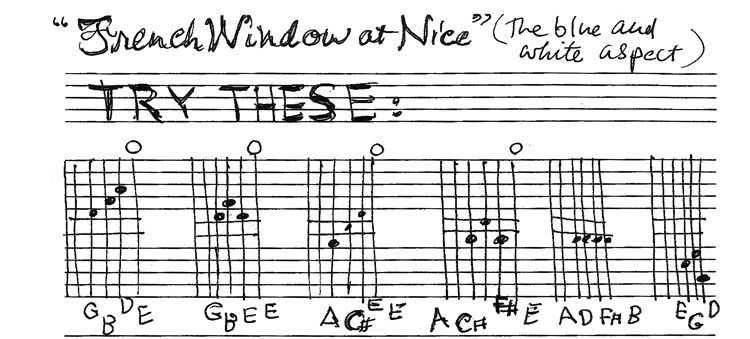
Custom Jonathan Richman chords for a Matisse jam.
COURTESY THE ARTIST
Bonus…
And yes, I still paint. Here’s a street corner scene I painted in oils in San Francisco in 2009. It’s a bit of a sketch, really. I was out there on that corner with my easel for a couple of afternoons, getting the light right. Last summer, I started a couple of studies for a street scene here in the industrial section of the small town I now live in. I try to do the final painting all in a day so it will have integrity of light, i.e. not the lightings of two different afternoons. But sometimes I’m not quick enough to get it all in one day, so I will go back to the same spot another day if the light feels compatible.
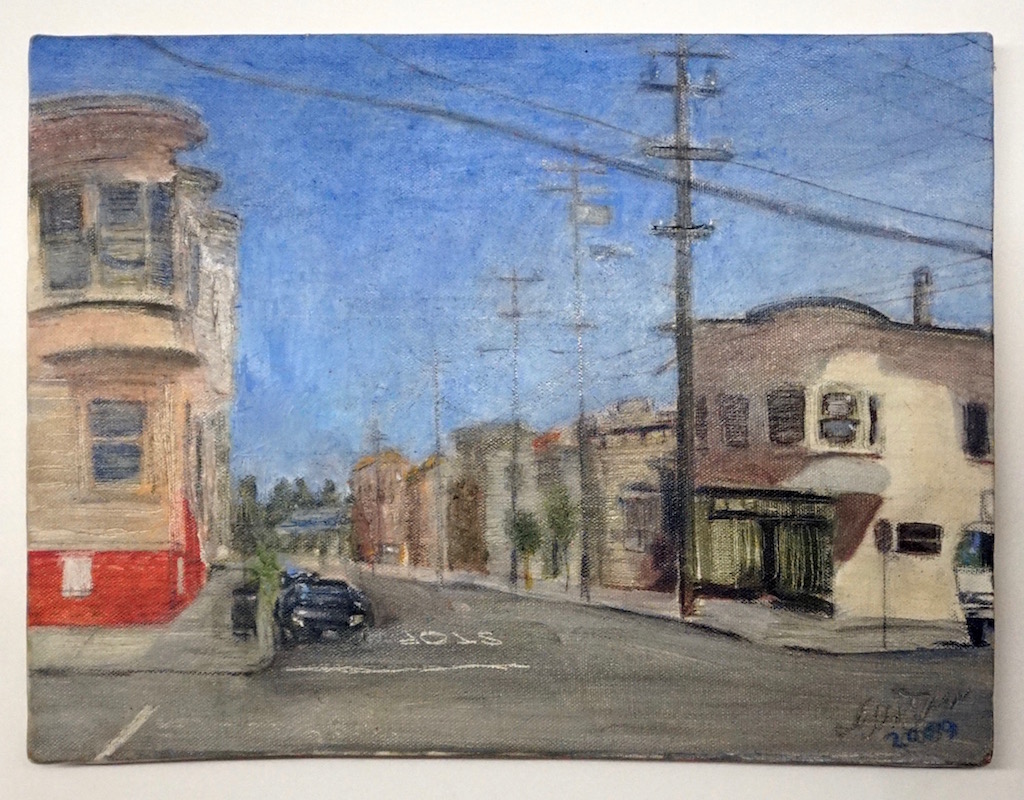
A painting by Jonathan Richman.
COURTESY THE ARTIST
[ad_2]
Source link

